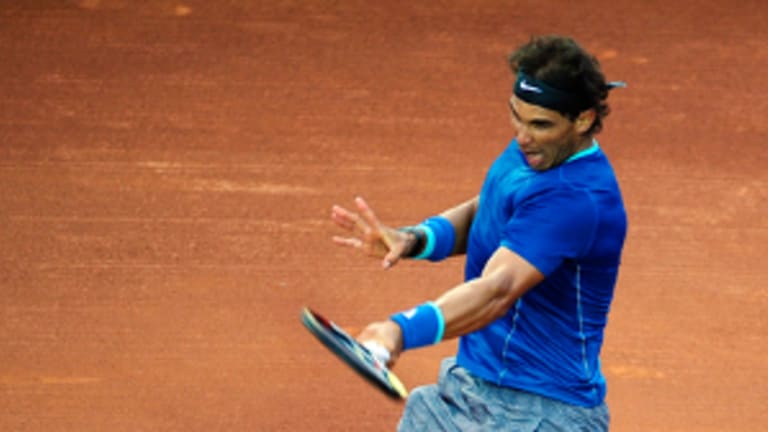Everyone blinks. It’s a fact of life. The average person blinks 15 times a minute. But a tennis champion of the caliber of Roger Federer or Rafael Nadal can only blink half-a-dozen times in a career before critics and pundits begin to question the superiority that once made them giants among men—or at least men in short pants.
This is the boat Nadal finds himself in following his losses in back-to-back clay-court tournaments. The question “What’s wrong with Rafa?” first popped up in Miami after his desultory performance against Novak Djokovic. It picked up steam and a new urgency when he lost to countryman David Ferrer in Monte Carlo a little over a week ago. And now the question is broached even in better company, and at a higher pitch, because Nadal lost in Barcelona, a tournament he had won eight consecutive times, to Nicolas Almagro, a player he had never lost to in 10 career matches.
What’s wrong with Rafa is that he blinked. This was something that, while inevitable, isn’t predictable. You never know when it will happen in the back half of a champion’s career, though if you paid close attention during the two U.S. hard-court events (Miami, in particular) you were better prepared than some for this moment.
Nadal, who previously never met a break point he didn’t love or a set point that he didn’t jump on, whether on defense or on the offensive, blinked. In Monte Carlo, Ferrer and Nadal each had 10 break points. Ferrer punched through to break four times; Nadal did so on just three chances.
In Barcelona, Nadal was able to capitalize on just five of a whopping 18 break points, providing Almagro with 13 hero moments. Meanwhile, Nadal was able to fend off just three of the seven break points Almagro accumulated. In situations where Nadal is expected to come up big, he came up small. He blinked.
More telling, perhaps, has been Nadal’s body language. Time was, one of the stock images of Nadal at a critical juncture had him receiving serve with his legs spread wide, leaning into the court and swaying slightly, chin nearly touching the ground and beads of perspiration trickling from his stringy hair to explode like crystals on the court.
Now, at some critical moments, Nadal is the slump-shouldered guy shuffling from one side of the court to the other after a blown chance, head hung to reveal a developing bald spot. If he looks up, it isn’t to meet the gaze of his opponent but to cast a fleeting glance of doubt toward his crew up in the player guest box.
Every great player goes through something like what Nadal is presently experiencing. As Steve Tignor wrote in his Racquet Reaction on the Nadal-Almagro match, Rafa may be going through the beginning stages of something like what Federer endured in 2010. Like Federer, Nadal set the bar awfully high for himself, back in what once seemed an endless succession of unblinking days. But things have changed, as they must. As they will.
There’s no doubt that at age 27, and with 13 Grand Slam titles under his belt, the timing of this tremor in Nadal’s confidence is—what’s the right word?—understandable.
Nadal has been awfully good for an awfully long time, and thus he’s subject to something that the Stanislas Wawrinkas and even Andy Murrays of this world may never know. Something I’ve always called “champion’s fatigue.”
